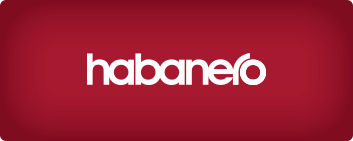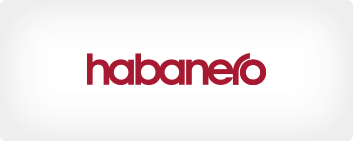A content audit is a summary of the type of information that's on your intranet, in your document management solution or in other collaboration spaces. Knowing what content you have and how it’s performing can help you:
- Create a business case to make improvements to your existing system or procure a new one
- Scope and budget a project that you already have business buy-in for
- Develop or make changes to your content strategy to improve the experience for people
- Inform or provide insights that would influence future information architecture design decisions
To be a valuable tool, the audit needs to be comprehensive and give you the right level of detail for your project. In this post, we’ll share our recommendations on how to complete a content audit for Microsoft 365 or SharePoint projects. With this crucial information at hand, you can better design a system for the kinds of content employees want to engage with and get the results you and your organization truly need.
1. Establish the purpose of your audit
Audits are not all the same. It's important to get clear on the outcome of your audit and how it will inform the work you intend to do, so you can set up the right structure and capture the information you need.
Sometimes you’ll be asked explicitly to complete an audit as a precursor to a project. This is particularly true if you’re building a new system and need to migrate content into the system before launch. In this case, an audit can help you understand the true scope of the project you're about to undertake.
In other circumstances, you may only hear hints about friction in your organization. For instance, users may share that the search function either doesn’t return useful results or it returns too many results to wade through. In that case, content hygiene, not search, is more likely to blame, and an audit can help with clean up.
Massive organizational changes such as an acquisition, close-out of line of business or a significant shift in leadership direction, can also trigger a need to look more closely at your content. In these scenarios, you'll often need look at the actual copy contained on pages and documents to determine if the material is still relevant in the new context.
Finally, an audit can help if you have a technical need to move off a soon-to-be unsupported system or if there are storage or back-up constraints in your current system. In this case, your audit will help you track what needs to be moved and what should be deleted or archived, as well as plan for managing the permissions and security needed before and after the move.
2. Start with IT
To get started, reach out to your IT team, who can provide you with inventory reports on the content you wish to audit. They may choose to use some of the standard Microsoft reports, or you may need them to create PowerShell or reporting scripts or make use of an inventory tool like AvePoint Fly Server to get the details you want.
The reports should tell you the structure of what you currently have. For SharePoint, this includes:
- Reports showing number and names of sites and subsites, potential owners and audiences based on the existing permissions, measures of usage and activity
- Reports showing the number and names of pages in each site, the number and names of the documents in each of the document libraries, and created by and last modified details
- Details on any lists being used in the site
- Reports on which web parts could be successfully modernized and which will no longer be supported (if you’re moving from classic to modern SharePoint and need to modernize pages)
- Reports of existing and inflight workflows, where you may have these in place
3. Look at the big picture first and work your way down
Audits should be done for the broadest level of content organizational structures – for SharePoint that's usually at the site level – and then as needed for more granularity. If you can make decisions about all the content contained in a site (or at least some large subset of it) together, you’ll save yourself and your content owners a lot of effort.
Sites or content that haven’t been updated recently or accessed regularly may be targets for deletion or archiving. It’s helpful to set some base criteria you’ll use for doing broad sweeps initially. For example, you can decide not to look in detail at content older than five years, unless it belongs to a specific area.
4. Engage your content owners
While you’re working with your IT team to get your inventories complete, you can also reach out to some of the owners of the big content areas and start to get them on your side. You’ll need to be able to communicate what they’re going to be asked to do, the timing, and potential commitment needed for the content review. Content owners will need to be able to answer questions about whether the content is up to date and still relevant to the organization.
To help your content owners develop a set of suggested criteria for decision making, you can incorporate input from for your information management or records management team and other supports, including senior stakeholders in operations, user experience or risk management. Examples could include:
- Only keep content that has been created or updated in the last three years.
- Archive all inactive content from health and safety but ensure it’s kept for record keeping purposes.
5. Create content audit templates and tools to make it easy
Build out some easy-to-use tools to capture the decisions made by content owners. Shared spreadsheets or SharePoint lists are usually the best options since you’ll likely have multiple people providing their input. Within these tools, be specific about what decisions need to be captured and where.
Our basic template includes:
- Name or location of the content – Usually as a site URL or a URL for specific pages or documents
- Type of content – Documents, pages or other file types
- Size or volume of content – This could numbers of pages or documents or the total size of the files in GB
- Content owner(s) – The people who can make decisions about the content’s future
- Permissions – For both creators and viewers
- Summary of the content – What the content is about or what business value it brings
- Content hygiene – Whether or not the content is still valid, useful and relevant to your organization
- Analytics – Any indicators of user traffic
Download our free content audit template
Completing a content audit is an important piece of the puzzle to help you thoughtfully build out your future intranet or collaboration experience. We can get you started with our content audit template, but we’d also love to hear from you to see how we can help.



.jpeg?bc=white&la=en&mw=416&modified=20251202191043&hash=E64AA9DFFAE8D1AC27890831F714D5B0FA2FEBB2)


